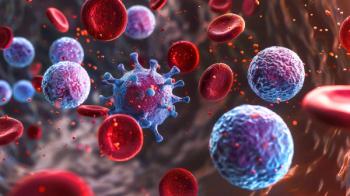
Additional Agents for AML Maintenance Therapy
Cole McCoy, PharmD, and Danielle Marcotulli, APN, RN, MSN, FNP-BC, AOCNP explain the additional agents being studied as maintenance therapy options.
Episodes in this series

Ryan Haumschild, PharmD, MS, MBA: Speaking of those more innovative agents that are coming, [or have been coming] to market, Dr. McCoy, do you have any others that you want to add? I know we heard a preview of those agents, but [would you like] to talk more in depth about anything?
Cole McCoy, PharmD: Dr. McCloskey did a great job of explaining the specific agents, as well as the goal of maintenance therapy. As of now, in the NCCN [National Comprehensive Cancer Network] guidelines, the only kind of agents are sorafenib for patients that had a FLT3 mutation. We used to use sorafenib in the upfront setting, but [that has] been replaced by newer, more targeted FLT3 inhibitors. However, that's still in the guidelines for patients in maintenance. One study [that Dr. McCloskey] talked about a little with that flip is post transplant. We have a study at our institution [that is] looking at gilteritinib in maintenance. They get gilteritinib vs placebo. We have several patients on that study currently. The other agent that [Dr. McCloskey] talked about that's currently in the NCCN is oral azacytidine, [but he's] talking about different immunotherapies as well. It's an evolving area of practice in AML [acute myeloid leukemia].
Ryan Haumschild, PharmD, MS, MBA: It's never bad to inject some more treatment options, especially ones that can be tolerated. We're talking about maintenance therapy, but what about for those patients in remission where there's no transplant plan? [Is there] anything else that you think is going to be innovative there? What type of treatment do you typically utilize in that space?
Cole McCoy, PharmD: I haven’t worked at an institution that is a big transplant center. We have a lot of patients that do go on to receive a transplant, so we push in that area. There are patients that aren't good candidates for transplant, or they just don't want to go to transplant. I've seen [oral azacytidine used] a couple times, but we don't have too many patients on it because it's a niche population.
Ryan Haumschild, PharmD, MS, MBA: We talked about earlier patient education, and when we talk about maintenance therapy, we've got to prepare patients. That's important so they understand what the journey is early on. When they get to that point where they're done with transplant or they're transplant ineligible, they [can] understand the next steps in therapy. Danielle, you deal with a lot of patients where you're having to educate them, provide expectations. How do you approach the discussion of maintenance therapy with your patients?
Danielle Marcotulli, APN, RN, MSN, FNP-BC, AOCNP: A few people have already mentioned it, but it's important to have this conversation early on. Patients, oftentimes, have been through induction and multiple consolidations. They've been away from their family. They've been in the hospital. When you start to talk to them about a maintenance therapy, their immediate response is, "No. I did my chemotherapy. I want to live my life." It's important to tell them that they can maintain their quality of life. This is gentle; it's well-tolerated. You can go on vacations. You can do what you want to do, and it's going to help you in the long run. That conversation needs to when they're getting their intensive consolidation so they're prepared for that moving forward.
This transcript has been edited for clarity.
Newsletter
Stay informed on drug updates, treatment guidelines, and pharmacy practice trends—subscribe to Pharmacy Times for weekly clinical insights.



















































































































































































































